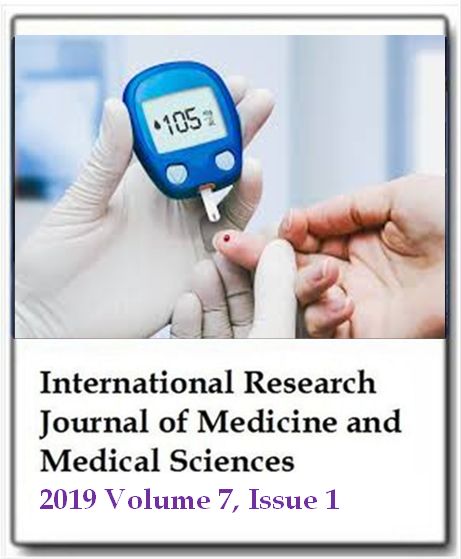Association between pentraxin-3, body fat distribution and carotid intima media thickness in premenopausal obese women
Ozen Dedeoglu, Guzin Fidan-Yaylali, Duygu Herek, Suleyman Demir, Hande Senol and Senay TopsakalInternational Research Journal of Medicine and Medical Sciences
Published: January 29 2019
Volume 7, Issue 1
Pages 16-20
DOl: https://doi.org/10.30918/IRJMMS.71.18.065
Abstract
Pentraxin 3 (PTX3) is an acute-phase protein that shares structural homology with C-reactive protein (CRP). Because obesity and metabolic syndrome (MetS) are considered chronic inflammatory states, PTX3 might be involved in the pathogenesis of obesity and MetS as well as CRP. In this study, we aimed to investigate the relationships between PTX3, CRP, body fat distribution and carotid intima media thickness (CIMT). 73 obese premenopousal women and 53 women with normal body mass index (BMI) took part in this study. Body fat distribution was evaluated by ulrasonography and by Bioelectrical Impedance Analysis (BIA). PTX3 was similar in both groups. PTX3 was also similar in obese patients with and without insulin resistance. CRP is significantly higher in obese patients (p < 0.01). It was also significantly higher in insulin resistance obese patients (p < 0.01). There was no correlation between BMI and any of the inflamatory markers. Multiple regression analysis showed that PTX3 is positively correlated with waist circumference (WC) (p = 0.036, beta = +0.436) and negatively correlated with subcutaneous fat (SCF) (p = 0.011, beta = -0.310). In conclusion, although PTX3 levels were not higher in obese patients and have no correlation with visceral fat, PTX3 levels were correlated with WC. In premenoposal obese women PTX3 levels were not related to subclinical atherosclerosis measured by CIMT.
Keywords: Pentraxin-3, visceral fat, subcutaneous fat, atherosclerosis.
Full Text PDFThis article is published under the terms of the Creative Commons Attribution License 4.0

